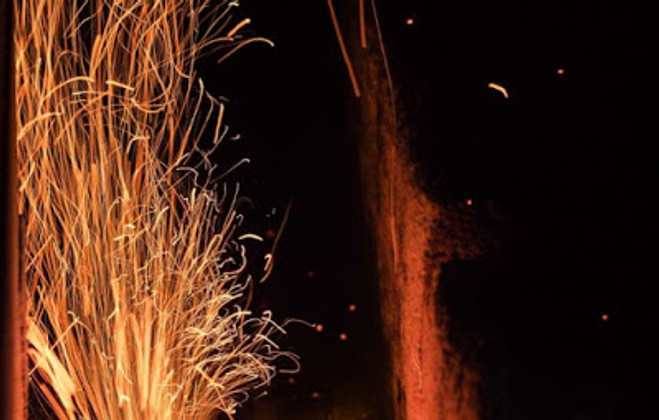What Exactly Are Clay Tempered Swords?
Posted by Sword N Armory on Dec 30th 2019
There are quite a few different names for clay tempering, such as selective tempering, zone treating, or differential hardening, but most commonly it's known as differential tempering. Regardless of the name used, it refers to the way the blade is heat treated to have a strong cutting edge and a soft, springy spine. There are several ways of achieving this effect on swords, each meant for different situations.
How does the process work?
The process is called heat treating in general, when a piece of metal is crafted into a blade. There are 3 steps: annealing, hardening and tempering.
The very first involves heating a piece of metal slowly and cooling it slowly in order to soften the metal, this is the annealing process. This process makes the metal easier to work with and shape before the hardening process.
Hardening can be done by quenching, or rapidly cooling, a blade once it has been heated evenly. This can be done with water or oil. This process makes the metal go from very soft to hard in just a moment. The blade is now rigid, but also brittle. It's important for the blade to be very hard so it will stay sharp, but when the whole blade is left like that, it breaks under stress. Hardness and sharpness can be given to a sword's edge, while adding to the spine's flexibility by using the clay tempering process.
Clay tempering is the process of insulating parts of the blade to be softened with clay, this way when it is heated and cooled, those parts cool slower. The exposed areas, like the sword's edge, cool quicker and the areas covered with clay cool slower during quenching. The clay for tempering is thickly painted onto the blade. The composition of the clay can include ashes and salts, and are adjustable elements for producing a specific result.
The last step is tempering the blade. This reduces some of the hardness achieved during the hardening process. This is important when the metal needs a certain degree of flexibility without being brittle enough to break. Once all the clay has been removed, the blade is heated again and cooled slowly. The blade edge gains more hardness than the rest of blade because of the clay tempering. This difference in hardness can be seen on the blade by the temper line, also known as the hamon.
The end result: As long as the heating process is performed correctly, this process creates a blade with a spine less hardened than the cutting edge and has exceptional strength and flexibility with good cutting ability. This is especially beneficial for larger swords that handle quite a bit of abuse.












